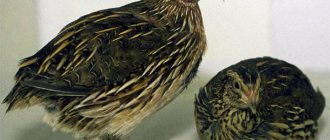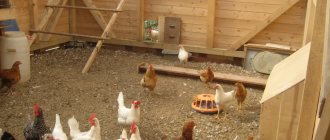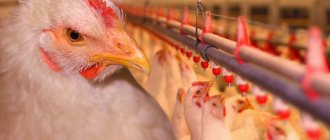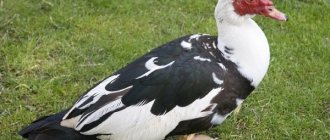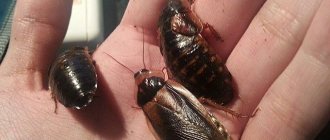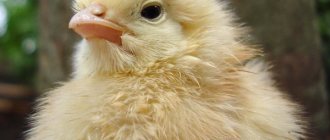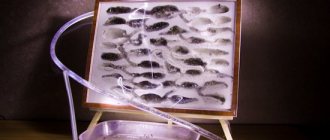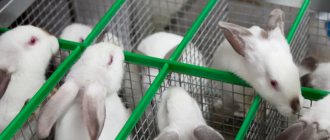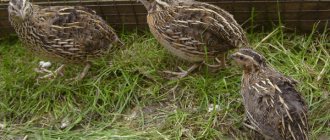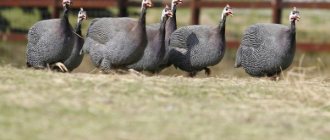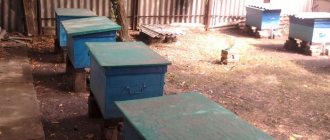Specific Features
Ostriches have a tiny brain, weighing 30-40 grams. They absorb information very poorly and process it slowly. For this reason, any, even the slightest blow to their head can be fatal.
When building a fence for a menagerie, one more physiological property of birds must be taken into account. They like to stick their head into various openings, such as a hole between a fence. Because their memory is very short, they instantly forget how they got their head in and how to get it out. In panic, they begin to twitch and frantically try to free themselves. Often the skull is displaced from the cervical vertebrae, which leads to the death of the pet.
Why is ostrich breeding necessary?
These birds have excellent adaptation to any conditions and can withstand both low and high temperatures. They are unpretentious to food, consume almost everything that is given to them, have excellent immunity, and mortality rates are quite low.
According to experts and experienced poultry farmers, breeding ostriches at home is not at all difficult for beginners; anyone can master the principles of breeding these birds. In the CIS countries, ostrich farms are becoming increasingly popular; ostrich farming has already become part of the agricultural sector.
Meat products
Ostrich meat has excellent taste, tastes similar to veal, and contains a large amount of proteins. It is also very nutritious and low in calories, with a low cholesterol content - practically dietary meat. When slaughtering 1 individual, you can get up to 30 kg of meat product. During the cooking process, ostrich meat undergoes all heat treatment methods.
Eggs
An ostrich egg weighs 0.5-2 kg, that is, 30-39 times heavier than a chicken egg. Eggs can be stored in the refrigerator for up to 1 year. In 365 days, a female can lay up to 64 eggs. In addition to its direct purpose - the production of dairy products, egg shells can also be used in art, for example, for painting and engraving.
Fat
Fat finds its application in the field of pharmacology and cosmetology; it can often be found in various creams, ointments and soaps. The most valuable is emu fat, as it has remarkable bactericidal, disinfectant, moisturizing, softening and regenerating properties. One individual contains from 5 to 15 kg of fat.
Leather
Ostrich leather can often be found in bags, shoes, clothing, and accessories. Surprisingly, it is of very high quality, elastic and waterproof. According to its characteristics, it can be equated to the skin of a snake and crocodile. In addition, this leather has a long service life - up to 24 years, which makes it very popular for the manufacture of designer products.
Feathers
Feathers are most often used in sewing carnival and concert costumes; they are also used to make capes, hats, and handbags. White feathers are bought by dance groups, designers, and fashion designers. The feathers of this bird also serve as filler for pillows and blankets. From the sale of feather products alone, you can get approximately 10-15% of your income.
Claws
Ostrich claws are very hard; they are often used by jewelers when polishing the edges of diamonds. Claws are also used in the fashion industry, used in the manufacture of bracelets, necklaces, pendants, earrings and other decorative items.
Why do they raise poultry?
Breeding ostriches, for all its exoticism, is a fairly profitable line of business that even a novice entrepreneur can engage in. Keeping birds does not require any special skills, so those who know how to work with chickens or ducks will not have any difficulty coping with the breeding of ostriches.
Ostrich meat and eggs are the main products that can be obtained by engaging in this business.
Main advantages:
- Low competition, and therefore an opportunity to offer the market a new unusual product.
- Delicious dietary meat that will become a real decoration for any holiday table.
- Possibility of obtaining related products (eggs, leather, fat, feathers).
- The birds are unpretentious, rarely get sick, and adapt well to the climatic conditions of Russia.
Note! The demand for ostrich products is growing from year to year, but such farms appear quite rarely, so the business will become profitable.
Varieties
The main varieties of the breed are:
- emu (country of origin – Australia);
- African (South Africa);
- rhea (South America).
Ostrich Emu
The emu differs from all other breeds in its unusual plumage color - brown or gray. They are unusually tall, but have a poorly developed skeleton and no flight wings. Females and males of emus look almost identical; few poultry farmers can tell just by appearance which is a boy and which is a girl.
Like any other breed, they run away at speeds of 50-60 km/h if they sense danger. They eat everything, their character is calm and flexible, they are sociable and quickly begin to feel affection for people.
African ostrich
This breed has its own internal subspecies:
- black African ostrich;
- Namibian;
- Zimbabwean;
- Maasai.
The African variety of these birds impresses with its beauty and incredibly soft black and white plumage. To keep these birds you need a stable temperature of +22…+36oC. They definitely need a large walking area and a warm room in the winter. Living with people for a long time, these fluffies easily contact their owner and certainly become attached to him.
Nandu
In appearance, rheas are similar to the black African variety. The average bird is 135 cm tall and weighs up to 30 kg. They differ from all their fellows in the absence of feathers in the head and neck area. The body area is colored with grayish feathers. Individuals of this species are considered herbivores.
History of origin and habitat
More than two million years ago, ostriches were discovered on the African continent. However, according to some scientists, they came to Africa from Asia. Before the Ice Age, they already lived in Europe, China and India. This is evidenced by the found bones of 7-8 extinct representatives. Later they lived in the territory from the southern part of Ukraine to Central Asia.
The scientific name "struthio-camelus" translates to "camel sparrow". Like a camel, it can live in the desert and is able to travel long distances. It also has a large body and bulging eyes with long eyelashes.
In the mid-twentieth century, birds were completely exterminated in Arabia and Syria. Nowadays, the habitat of wild individuals is the treeless spaces of Africa. In southern Australia, only solitary representatives of the species can be found.
Previously, emus were classified as ostriches, but the classification was revised and today they are a separate species of bird.
Necessary conditions of detention
Pets can be kept:
- Intensive - birds must live in a small area, and the eggs must be incubated. This is done to establish contact between people and ostriches.
- Extensive - the birds should be in a large, spacious area where they will be left to their own devices.
- Semi-intensive - this option combines the first two.
Single-level and multi-level schemes are used for raising pets. In the first, all individuals must be the same age, they are raised until slaughter or until the age of three months. According to the second scheme, there can be individuals of different ages on the farm. All of them must be kept in one room.
Territory
Before getting birds, you need to consider the size of the area and calculate the square footage for each individual. The territory of the ostrich farm must be sown with grass, clean fresh water is also needed in drinking bowls, preferably there is a lake, reservoir or stream.
Room
The room for pets must be at least 180 m2 and well lit. Each bird should be allocated 40-45m2, so approximately 24-25 individuals will fit there. An aviary is an insulated brick shed with a strong foundation. The means of ventilation will be windows or holes made in the ceiling.
The poultry house should be coated with clay or covered with sanded wood, which should then be painted. The bedding can be straw or sawdust. Ceilings should be high, windows should be installed 1-1.5 m from the floor.
Features of winter care
Winter care for pets involves regular cleaning of the enclosure, checking the level of moisture and temperature, because without these conditions the bird will not be able to develop normally. In the summer, it is easier to care for them, since they spend more time walking around the territory. In order for birds to grow healthy and strong, the premises must be constantly disinfected, and if the occurrence of disease is observed, sick individuals must be moved to a separate enclosure. Pets need sunlight, so the house should have many windows, preferably on the south side.
How to handle birds
You need to be careful when caring for birds. You should not make sudden movements; it is advisable to always enter the enclosure wearing the same clothes, since they may not recognize the person who is caring for them and react aggressively. An adult ostrich can inflict a fatal blow on a person with one paw. To calm a nervous bird, you need to put a bag on its head.
Characteristics of chicks
Knocking on the shell indicates the imminent appearance of the baby. The small chick consistently pokes its beak in one place until a small hole is formed. Then, making several holes nearby, he forcefully pushes out the cracked shell and climbs out. When the last chick hatches, the adults destroy non-viable eggs.
Newborn chicks weighing up to 1.2 kg and 20-25 cm tall are born sighted and with light fluff covering their bodies. They almost immediately get on their feet and move well.
After 2 months from birth, the yellow and black bristles on the body are replaced by real feathers, similar in color to the color of the plumage of females. The chicks acquire their characteristic “adult” coloration after 2 years.
Feeding
Nutrition should be varied and balanced. The bird menu must include the following elements:
- minerals (calcium, potassium, phosphorus, gravel, lime);
- roughage (hay, grass, straw);
- vegetables and fruits (potatoes, carrots, onions, apples, pears, cucumbers, bananas, plums);
- flour (fish, bone);
- grains and seeds (oats, rye, wheat, peanuts, soybeans, sunflower and pumpkin seeds);
- vitamin complex.
Chicks
Newborn ostrich chicks should not be given anything for the first three days. On the 4th day, the ostrich chicks are given some water and small clover leaves mixed with the combined feed. From the 5th day to the 4th week, they must be fed with cottage cheese and a boiled egg. Already at 1.5 months and up to 3 months they need to be given compound feed. Young animals under 12 months of age should be fed 3-4 times a day.
Adults
Adults need to eat twice a day. During oviposition, the female requires an enhanced diet, so at this time the nutrition of females and males should be different. You should carefully monitor the fullness of the feeders. Additionally, you should put a trough with sand, lime or gravel, the consumption of these products improves the digestion of pets.
Breeding
With the onset of warmth, the mating season begins already in March, lasting until the October cold. The female can lay from 25 to 90 eggs. Raising ostriches as a business involves the use of artificial or natural incubation. The incubator does not accommodate eggs from the first and last clutch.
Ostriches reproduce well naturally and are polygamous. Experienced ostrich breeders believe that the birds should be kept in a flock, which will include several females and one male. During the period of sexual activity, males court females and attract their attention. Having mated, the expectant mother begins to hatch the eggs; the future father can help her with this, laying straw or hay to keep the eggs safe.
Behavior during the mating season
The temperament of ostriches during the mating season differs significantly from males. Before mating, the male behaves calmly, gallantly courtes the object of his adoration, and demonstrates a dance of love to her. Also, his readiness to procreate can be seen by the reddened skin of his legs and beak area, he begins to fluff his tail and stretch his neck. Sometimes attacks of aggression may occur - he is capable of attacking and tormenting an ostrich. At this moment it is better to calm him down, because he can cause injury to his chosen one.
If the female is ready to mate, she begins to become quiet, calms down, as if hiding, showing him that the mating process can begin.
Males become sexually mature at 2-2.5 years, and females at 1.5-2 years. Their reproductive function persists until the age of 35. It is better for the ostrich to be older than its partner, this increases egg production.
Incubation
During natural incubation, all eggs are laid in one nest, which can hold 20-25 eggs. Usually ostriches hatch their “babies” during the day, and at night they hand over the post to the young father. The chicks hatch in close succession to each other, and immediately from the moment of birth they have good eyesight and thick plumage that protects them from the cold at night. 3-4 hours after hatching, the babies can eat and walk independently. Raises the baby, as usual, dad.
If the breeder has chosen artificial incubation, the eggs need to be prepared. Before placing eggs in the incubator, they must be kept in the refrigerator at a temperature of 14-20°C for 7-9 days. They need to be turned over once a day. Before placing eggs in the incubator, they should be disinfected by spraying formaldehyde or hydrogen peroxide on them.
The second incubation method is chosen by many farmers and poultry farmers. The incubation process takes place over a month. By taking the eggs from the female immediately after she has laid them, their numbers can be increased, since she can no longer hatch them.
Caring for offspring
Newborn chicks should be closely monitored until they are six months old. For 4-5 days, babies should not be fed or watered; they are placed in a warm room, preventing drafts.
In the summer, ostrich chicks should be in the sun more often. Babies usually interact well with people and listen to their caregivers. It is better to keep young and adult individuals separately to avoid aggression from elders and infection of babies. Water and food should always be clean; dissolved vitamin B should be in the water every day in moderate dosage (4-5 g per chick).
Where to begin
Let's look at all the ways to enter this business.
- Buy hatching eggs. With this method you need
- be sure to get an incubator;
- pay 35 dollars for one egg.
As a result, the egg may not be fertilized, or the baby ostrich may not be viable. With this method, there is too high a chance that all your expenses and efforts will be in vain.
- Buy one-month-old ostrich chicks. One baby ostrich costs 10,000 rubles. This is the least expensive option for a beginning ostrich breeder.
- Buy an ostrich family. It is considered optimal when in a family of ostriches there are two females for one male. The cost per family is about $5,000. This start guarantees quick payback and income generation. But the costs in this case are significant. Requires a large starting capital.
Flaws:
- The need for large start-up capital.
- Difficulties with selling products.
- A lot of land is required for an ostrich farm.
Ostrich diseases
Despite the fact that ostriches have good immunity, they are still susceptible to the following diseases:
- respiratory (flu, infectious diseases, hemostasis, coprostasis, entry of foreign objects into the respiratory canals);
- gastrointestinal (gastritis, ulcers, intoxication, botulism, helminthic infestation);
- nervous (encephalitis, Newcastle disease);
- musculoskeletal (deformation of legs, neck);
- dermatological (mites, fleas).
In any case, before getting pets, you should find a veterinarian who will be ready to come to the farm if there is something wrong with them.
Preventive measures
You can prevent the occurrence of an epidemic in this way:
- regularly clean and disinfect premises, territories and all containers touched by the bird;
- allocate a special quarantine enclosure where sick or recently purchased individuals will be housed;
- When placing eggs in the incubator, you should treat your hands with a disinfectant solution, since eggs do not have a protective membrane and are easily susceptible to germs;
- from time to time examine the birds themselves and their excrement - conduct an external examination and submit materials for laboratory testing;
- strictly ensure that mice, rats and other rodents do not appear in the poultry house, because they are carriers of any infection;
- birds should be vaccinated on time;
- water should be changed 1-2 times a day, food should be fresh, and feeders should be clean;
- adequate ventilation must be ensured - both in the incubator and in the poultry house;
- If the presence of any disease was noticed in at least one individual, it should be urgently removed from the rest, placed in quarantine and called a veterinarian.
Is an ostrich farm profitable?
In order to raise ostriches, you should adhere to a business plan. First, you need to decide on production volumes and find where to sell the products. Next, you should calculate the costs of renting or purchasing premises and territories, food, water, electricity, advertising, and paying employees to obtain a permit. You also need to find people who sell and buy ostriches, and find staff who will care for the pets. This business will require significant financial investment.
Market price
In Russia, ostriches are sold at the following prices:
- chicks 1-1.5 months old are sold for about 3-4 thousand rubles;
- an ostrich that has reached 1-1.5 years old costs from 30,000 rubles;
- ostrich aged 2-2.5 years – 35,000-38,000 rubles;
- several mature birds are sold at prices ranging from 80,000 to 120,000 rubles.
